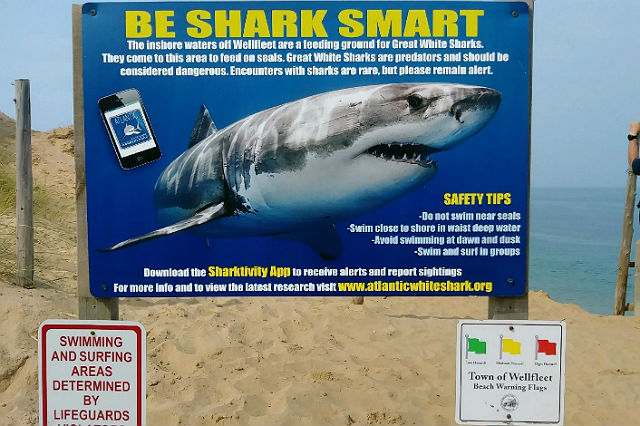One of the most common summer trips for many Americans is a jaunt to the beach. While soaking up the rays and taking a dip in the ocean are fun, there are some important beach safety tips to consider before and during your visit.
So we’ve put together a list of tips to ensure that your trip is not only fun, but also one free from injury. Take a look at our beach safety tips and let us know in the comment section if we missed any essential pointers.
The best beach safety tips
Check the weather. If the day’s forecast calls for storms, especially lightning, avoid the beach. And wait at least 30 minutes after the last thunder boom before getting into the water.
Look for warning flags and know what they mean. Although different states and beaches use different colored flags with assigned meanings, red flags typically indicate strong currents or that the beach is closed, yellow means moderate surf, green indicates the ocean is calm and blue or purple warn against potentially dangerous marine life, such as sharks or jellyfish. Not all beaches are suitable for swimming, so find out what the rules are before you show up.
Know how to swim. Swimming lessons can greatly reduce the risk of drowning for children. If a child cannot at least doggie paddle, do not let them in the water. Keep in mind that swimming in the ocean is different than in a pool or lake, due to currents. Remember that the ocean floor is not flat and can drop off unexpectedly.
Be sure lifeguards are on duty and swim in a spot close to one. It’s a good idea to pick a spot to swim close to a lifeguard, so that he or she can reach you quickly in case of an emergency. And keep in mind that currents will push you down the shore. Once that happens, relocate close to a lifeguard station. Also, it’s a good idea to observe the buddy system while swimming in the ocean.
Wear a life jacket. If you are boating in the ocean, be sure that every passenger is wearing a life jacket.
Watch for rip currents. When waves do not break evenly along the shore, they occasionally break more strongly in some areas than others, which can produce a rip current, a strong channel of water extending from the shore out into the water. These currents, which are frequently cited as the top hazard for beachgoers, can pull even strong swimmers out to sea. If you see a current of choppy, off-colored water extending from the shore, steer clear of it. If you get pulled, remain calm and save your energy, allowing the current to carry you. Don’t try to swim against it. Once you gain your composure, swim horizontally until you are out of the current and, then, swim diagonally toward shore.
Be aware of waves. Injuries from waves can include everything from simple sprains to organ trauma or spinal damage. Waves that break directly on shore have the potential to cause serious injury. When in the water, never put your back to the waves.
Know how to identify swimmers in need of help. Drowning is the top cause of unintentional deaths worldwide and ranks fifth in the United States. Often, drowning occurs without much noise, so watch out for people whose heads are low in the water with their mouths submerged or legs vertical in the water.

Use sunscreen and wear sandals. Follow the advice of that song/graduation speech and use it. It only takes one bad sunburn to double a person’s chance of developing melanoma later in life. Use broad-spectrum sunscreen of SPF 15 or higher and be sure to have a source of shade – hats, umbrellas, tents, etc. The sun’s peak hours are 10 a.m. to 4 p.m., but also keep in mind that just because a day is overcast, you can still get a nasty sunburn. So, use lotion in all weather scenarios. Also, sand can get very hot on days with high temperatures, so wear sandals to prevent your feet from getting burnt.
Do not drink and swim. Alcohol can affect your judgment and dehydrate you, increasing the possibility of heat-related sickness or drowning. A total 22 percent of drowning incidents among persons, ages 15 years or older, are alcohol-related.
Take precautions against sun sickness or stroke. You put yourself in danger of severe sickness by sitting for hours directly under the sun’s rays. If you dehydrate or expose yourself to high temperatures, you run the risk of getting heat exhaustion, heat stroke or sun poisoning. Drink plenty of water and avoid dehydrating liquids, such as coffee or alcohol. Symptoms include dizziness, fatigue, headache, muscle cramps, weakness, nausea, excessive sweating, pale skin, swelling, rapid heartbeat, confusion, blistering, pain or tingling, fever or chills. If you or someone you’re with display these symptoms, get out of the sun, remove unnecessary clothing, drink water and take a cool shower. For more severe symptoms, seek medical attention.
Keep an eye out for ocean life. While shark attacks are pretty uncommon – an average 19 incidents in the U.S. per year and only one every two years is fatal – you should be on the lookout for jellyfish, razor clams, mussel and clam shells and small crabs.
Hydrate. Bring plenty of water and snacks. Exposing yourself to heat and the ocean can lead to disorientation and lowered energy. And while some have called the need to wait an hour to swim after eating a myth, it’s a good idea to give yourself a short break after having a snack before heading back into the water.
Are you prepared if you have car trouble on the way to the beach? Make sure you have the level of coverage that’s right for you!














